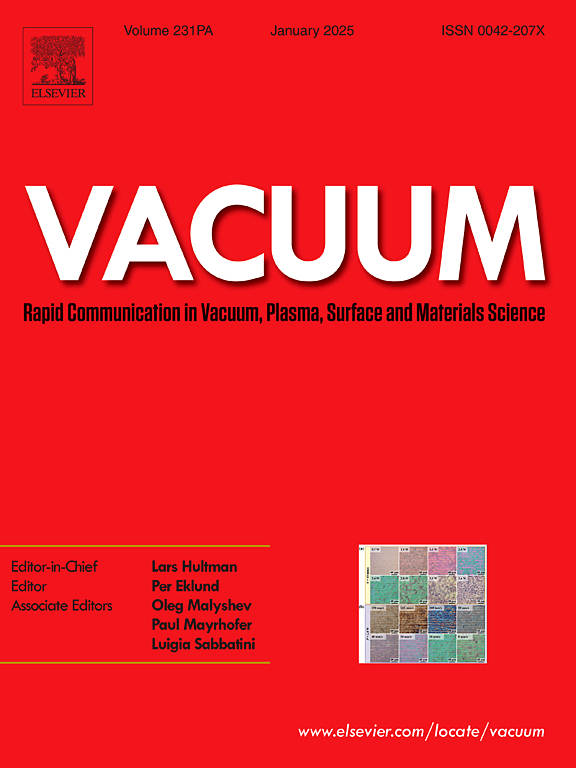Molecular dynamics study on the mechanical behavior and deformation mechanism of gradient oxygen content nano-polycrystalline α-T
IF 3.8
2区 材料科学
Q2 MATERIALS SCIENCE, MULTIDISCIPLINARY
引用次数: 0
Abstract
Interstitial oxygen significantly affects the mechanical properties of α-Titanium (α-Ti) by modifying dislocation slip and deformation twinning mechanisms. This study utilizes molecular dynamics simulations to investigate the influence of interstitial oxygen atoms on the tensile mechanical properties and deformation mechanisms of nano polycrystalline α-Ti, taking into account two distinct average grain sizes and varying gradients of oxygen content. The pinning effect of interstitial oxygen atoms on grain boundary relaxation dislocations is critical for stabilizing the nano-polycrystalline grain boundaries (GBs), with this effect becoming increasingly pronounced as the oxygen content rises. Additionally, the simulation results indicate that oxygen atoms at the twin boundary enhance the stability of the {10 2} twin boundary while exerting minimal influence on the migration of the {10 1} twin boundary. The deformation associated with {10 1} twinning leads to a crystallographic orientation transformation of the entire grain, which contrasts with the conventional grain rotation mechanism typically observed in nanocrystals. During plastic deformation, the primary dislocation slip mechanism is identified as the Shockley partial dislocation < 100>, whereas the basal plane perfect dislocation <11 0> easily dissociates into two Shockley partial dislocations due to the pinning effect of oxygen atoms. As a result, the dislocation density of the Shockley partial dislocation < 100> is the highest.
梯度氧含量纳米多晶α-T力学行为和变形机理的分子动力学研究
间隙氧通过改变位错滑移和变形孪生机制,对α-钛(α-Ti)的机械性能产生了重大影响。本研究利用分子动力学模拟研究了间隙氧原子对纳米多晶α-钛的拉伸机械性能和变形机制的影响,同时考虑了两种不同的平均晶粒尺寸和不同的氧含量梯度。间隙氧原子对晶界弛豫位错的钉扎效应对于稳定纳米多晶晶界(GBs)至关重要,随着氧含量的增加,这种效应越来越明显。此外,模拟结果表明,孪晶边界上的氧原子增强了{10 1‾ 2}孪晶边界的稳定性,同时对{101‾ 1}孪晶边界的迁移影响极小。与{101‾1}孪晶相关的形变会导致整个晶粒的晶体学取向转变,这与纳米晶体中通常观察到的传统晶粒旋转机制截然不同。在塑性变形过程中,主要的位错滑移机制被确定为肖克利部分位错 13 <1‾100>,而基底面完美位错 13 <112‾0>由于氧原子的钉扎效应,很容易解离成两个肖克利部分位错。因此,肖克利部分位错 13 <1‾ 100> 的位错密度最高。
本文章由计算机程序翻译,如有差异,请以英文原文为准。
求助全文
约1分钟内获得全文
求助全文
来源期刊

Vacuum
工程技术-材料科学:综合
CiteScore
6.80
自引率
17.50%
发文量
0
审稿时长
34 days
期刊介绍:
Vacuum is an international rapid publications journal with a focus on short communication. All papers are peer-reviewed, with the review process for short communication geared towards very fast turnaround times. The journal also published full research papers, thematic issues and selected papers from leading conferences.
A report in Vacuum should represent a major advance in an area that involves a controlled environment at pressures of one atmosphere or below.
The scope of the journal includes:
1. Vacuum; original developments in vacuum pumping and instrumentation, vacuum measurement, vacuum gas dynamics, gas-surface interactions, surface treatment for UHV applications and low outgassing, vacuum melting, sintering, and vacuum metrology. Technology and solutions for large-scale facilities (e.g., particle accelerators and fusion devices). New instrumentation ( e.g., detectors and electron microscopes).
2. Plasma science; advances in PVD, CVD, plasma-assisted CVD, ion sources, deposition processes and analysis.
3. Surface science; surface engineering, surface chemistry, surface analysis, crystal growth, ion-surface interactions and etching, nanometer-scale processing, surface modification.
4. Materials science; novel functional or structural materials. Metals, ceramics, and polymers. Experiments, simulations, and modelling for understanding structure-property relationships. Thin films and coatings. Nanostructures and ion implantation.
 求助内容:
求助内容: 应助结果提醒方式:
应助结果提醒方式:


